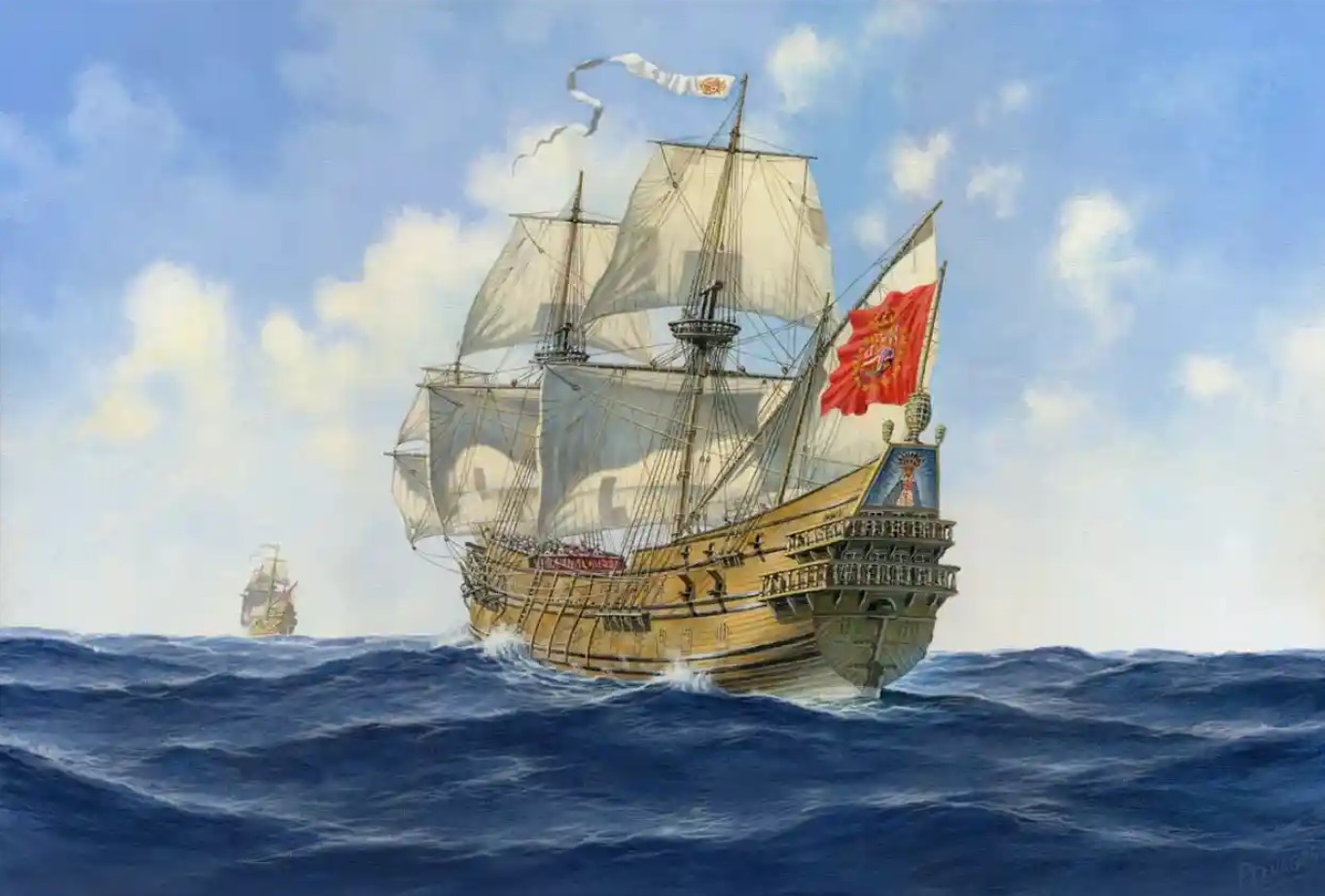To je nadhera.Díky za článek Romane.. 
New treasures of the Spanish galleon 366 years after the sinking
Categories: Treasures , War at sea , Nálezy nejenom s detektorem kovů v mořích a oceanech
In 1656, the Spanish ship Nuestra Señora de las Maravillas (Our Lady of Wonders) was wrecked on the west side of Little Bahama Bank about 70 km off the coast. It was literally stuffed with treasure, which is why it was repeatedly plundered by various societies and wild expeditions over the following centuries. When another expedition went to the site recently, few imagined that there was anything left on the seabed...
The ship, named after a 13th-century "miraculous" statue of the Virgin Mary in a Madrid monastery, was part of a large fleet. It was bound from Havana to Spain with captured American treasures, royal and private interests.as well as contraband and rich cargo recovered from another Spanish galleon wrecked off Ecuador. She was wrecked at midnight on 4 January 1656 after a navigational error. Colliding with the flagship of the fleet, she struck a reef and sank. Of the crew of 650 sailors, only 45 survived. Many were eaten by sharks...
Allen Exploration, a company with Bahamian and American marine archaeologists and divers, was licensed by the Bahamian government to conduct scientific research. The team first noted the stone ballast and iron fasteners that once held the hull together. Later, iron rings and pins from the rigging. Next, remains of tableware were discovered - from olive jars to Chinese and Mexican plates or personal items, including a military silver sword hilt and a pearl ring. Later, they recovered gold pendants, silver and gold coins, gems, ingots and other treasures.
An elaborate gold filigree chain with rosette motifs is one of the treasures that were intended for wealthy aristocrats, perhaps even members of the royal family. The gold pendant with the Cross of Santiago and the Indian bezoar, which was valued in Europe at the time for its medicinal properties, is in the shape of a conch shell, a symbol of pilgrims heading to Santiago de Compostela in Galicia. It is among the finds associated with the Sacred Order of Santiago, a military-religious chivalricgroup that protected the pilgrims and also actively participated in Spanish maritime trade. Another pendant is a gold cross of Saint James Santiago above a large green ovalemerald framed by a dozen square emeralds, possibly symbolizing the 12 apostles.
Allen Exploration was founded and is run by Carl Allen, a successful plastics dealer and philanthropist with an interest in Bahamian history. "When we picked up the oval emerald and gold pendant, my breath caught," he said. "The pendant hypnotises me as I hold it and contemplate its history. How these tiny pendants survived these rough waters and how we were able to find them is literally a miracle of the Maravillas."
"The wreck of the galleon had a difficult fate. It was repeatedly visited by Spanish, English, French, Dutch, Bahamian and American expeditions in the 17th and 18th centuries. It was irreversibly damaged by storms from the 1970s to the early 1990s. Some say its remains were ground to dust. With the help of modern technology and science, we are now following a long and winding trail of debris finds."
Convinced that the entire ship had not been destroyed, he put together a team and boats to search for the lost stern section, which was believed to have broken off and drifted away from the wreck. However, he wanted to examine the wreck archaeologically, unlike his predecessors who had simply sold off the finds. His team is using state-of-the-art technology and scientific techniques to determine how the Maravillas was destroyed and then scattered by centuries of hurricanes.
The expedition is also collecting data on reef health, seafloor geology and plastic pollution to understand how archaeology and the marine environment interact. "The seafloor is barren," Allen said. "The colorful coral that divers remembered from the 1970s is gone, poisoned by ocean acidification and covered by meters of quicksand. It's painfully sad."
Nuestra Señora de las Maravillas is one of a now unknown number of shipwrecks that have been destroyed forever by treasure hunters with the support of corrupt or incompetent government officials. In the 21st century, marine treasure hunting has become associated with money laundering, antiquities trafficking and terrorism.
All debris in Bahamian waters is the property of the Bahamian government. Allen Exploration wants to keep the finds together, sponsoring the Bahamas Maritime Museum, which opens August 8 in Freeport.
Roman Nemec
Sources: bahamasmaritimemuseum.com, theguardian.com, shiplib.org

Nuestra Señora de las Maravillas was built in 1647

Map of the area

Gold Coin

Gold and bezoar pendant

Part of the galleon's treasure

Anchor find

Sword hilt

Bottle of wine and precious stones

Gold filigree chain from a ship
The article is included in categories:












